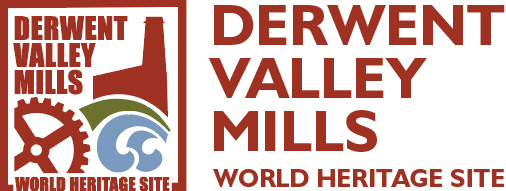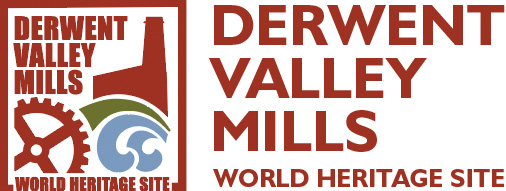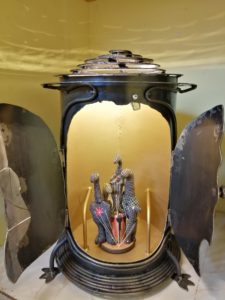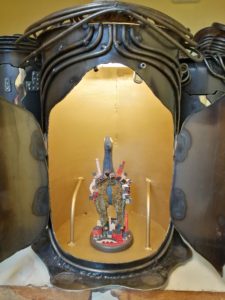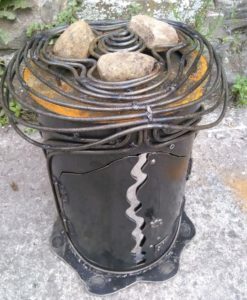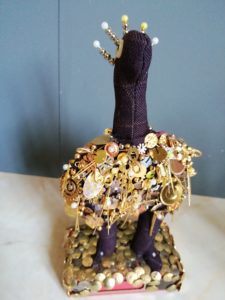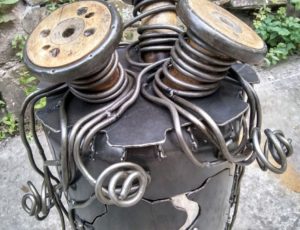Vessels & Meki Meki
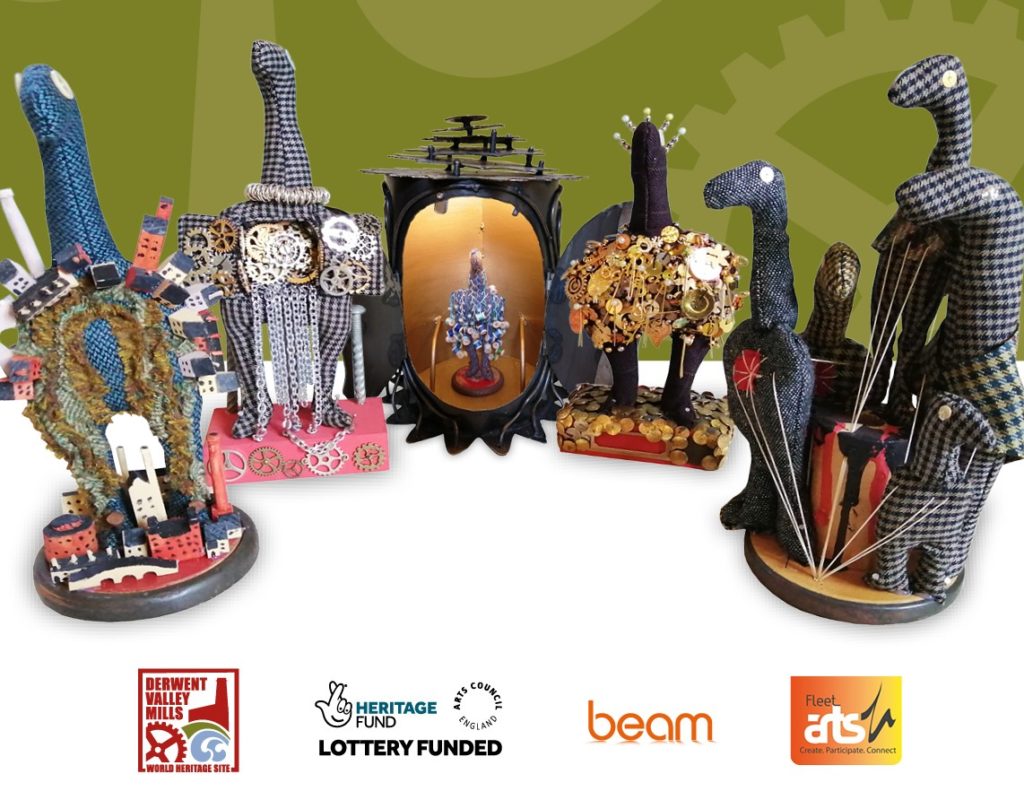
Derwent Delights – Sculptural Vessels & Meki Meki
Sculptor, Miles Halpin (@mileshalpin art) created five metal sculpted vessels, inspired and informed by the UNESCO four ‘key attributes and values’ that earned the Derwent Valley Mills their World Heritage Site status in 2001. He also added a fifth, the natural attribute of the River Derwent itself, which runs through the whole valley and was the source which enabled the innovations in industry to be developed here.
He represented each of these values and attributes into the design of the vessels in his own abstract way, starting with making a map of the River Derwent into five geographically equal sections. Each section of the river makes the join between the doors of each vessel and when aligned, they form a map of the river valley from Matlock to Derby.
The finished doors are marked with schematic maps of important roads, canals and railways, and the tracery of important links between places. He has also included representations of important locations made as clusters of points on small metal plates.
Artist Tan Draig (MBE) has created a team of his own textile sculptures called, ‘Meki Meki’. They are creatures that he uses to express ideas about the human condition and the world we live in, anchored in a time that is not ours. They have been featured in exhibitions and collections all over the world.
Tan was eager to use Meki Meki to show some of the amazing and complex attributes of the Derwent Valley.
- Workforce – Matlock To Cromford
-
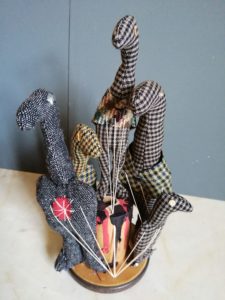 “Workforce” Tan Draig
“Workforce” Tan DraigThis group celebrates and remembers the major role that each worker had in forming the historic communities and landscape of the Derwent Valley. The figures – man, woman and child are joined together by the thread of work, a thread that ties their lives to the mills.
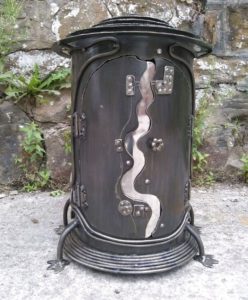
Miles Halpin – Matlock to Cromford The vessel depicts Matlock bridge, the road through Matlock Bath gorge, Masson Mill, Cromford village, Cromford Mills, Cromford wharf, and the canal. The parallels between geography at Cromford, the industrial process, and the local economy all led to creating layers stacked up on top of the vessel. This is inspired by UNESCO attributes, 1 and 2.
Build – Cromford to Ambergate
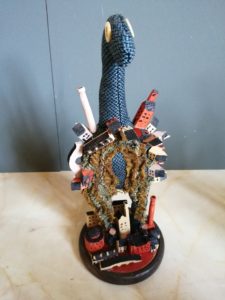
“Build” “Build” MekiMeki – Often when walking along the ridges and hills of the Derwent Valley we can think how much the towns and villages look like toys or models. This was inspiration to carve buildings based on the mills and houses of the Derwent Valley.
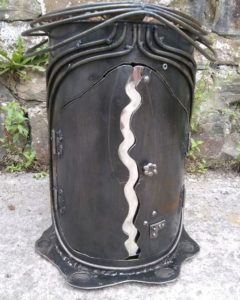
Miles Halpin – Cromford to Ambergate The vessel depicts the road and railway beside the river from Cromford to Ambergate, and the Ambergate nexus of transport links, with canal, road and rail all heading east, and the road south toward Belper. The top of the vessel, with its captured stones and spiralling threads of steel embedded in a contoured ‘landscape’, reflect the idea of human exploits in a natural landscape. UNESCO Attribute and Value 4.
Weir – Ambergate To Belper
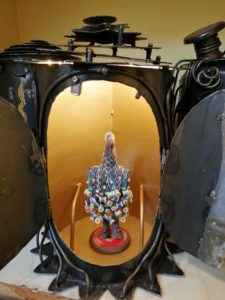
Weir – Ambergate To Belper 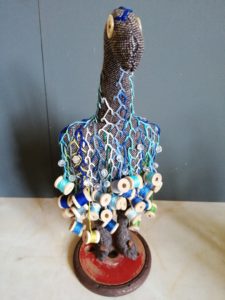
“Weir” Tan Draig When looking at the water flowing over the weir on the Derwent, it resembles threads twisting and tumbling over the edge. This Meki Meki contains are one hundred hand-turned bobbins wrapped with threads in colours taken from photographs of the weirs, then stitched using stitches that would have been used for the embroidery of socks (chevening).
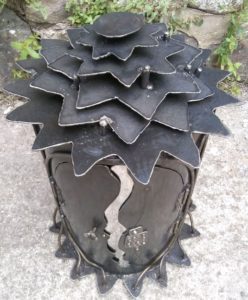
Miles Halpin – Ambergate To Belper The vessel Ambergate to Belper shows the river, its widened point at the Belper weir, the East Mill, the rows of housing on Long Row and the town of Belper itself. This top reflects the layered structure of industry as at Cromford, the innovative steel-frame construction of the North mill and the sparking cogs and wheeled energy. It links to UNESCO Attributes 1, 2, 3 and 4!
Machine – Belper & Milford to Duffield & Little Eaton
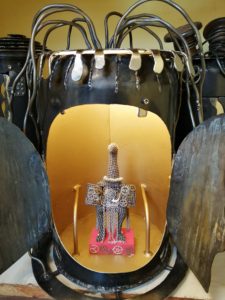
Machine – Belper/Milford to Duffield & Little Eaton 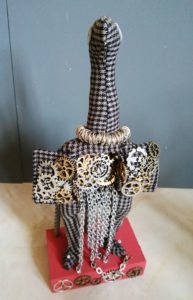
“Machine” Tan Draig This shows the importance of the invention and development of the machines that produced the textile products. Machines that are hidden within the mills, this Meki Meki opens up to reveal the machines and the energy they work with.
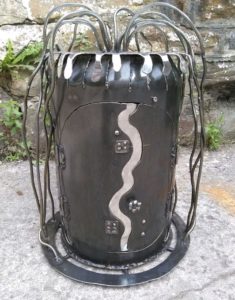
Miles Halpin The vessel shows Belper/Milford to Duffield and Little Eaton. Milford, with the road bridge there, Duffield, the old mill chimney on the east side of the river, and the road links in the area. The top of the fourth Vessel is shiny, clear, and springs from the landscape. UNESCO attributes? Well, all of them – the river is the thing that makes all else possible.
Wealth – Little Eaton To Darley Abbey and Derby
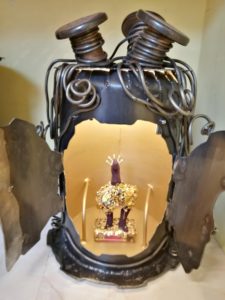
Wealth – Little Eaton to Darley Abbey and Derby A reminder that a major motivation in the development of the Derwent Valley was the acquisition of wealth for mill owners and workers alike.
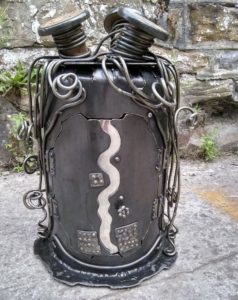
Miles Halpin – Long Eaton – Darley Abbey & Derby The vessel depicts the journey from Little Eaton to Darley Abbey and Derby including the four mills at Darley Abbey, and the road and rail and canal links from the city. Shaped as cogs on the top, with bobbins from the Derwent mills, wrapped in threads of steel that flow through the gears of the cogs. Darley Abbey and the Derby Silk Mill are important parts of the Derwent Valley Mills World Heritage Site and include UNESCO attributes and values 1, 2 and 4.
